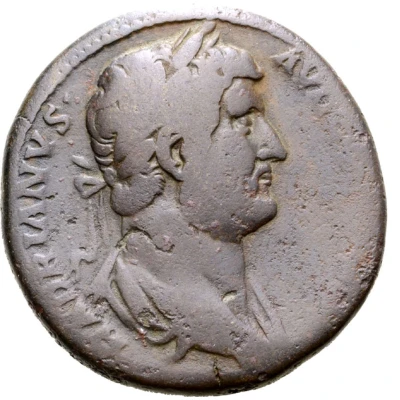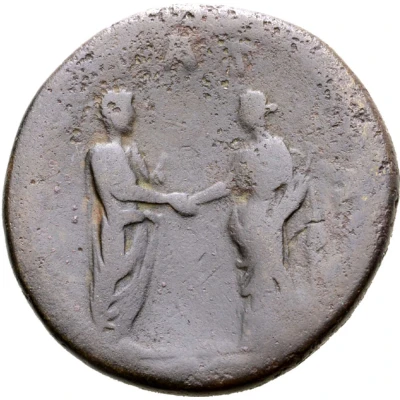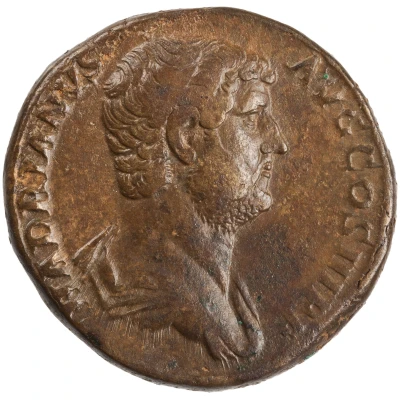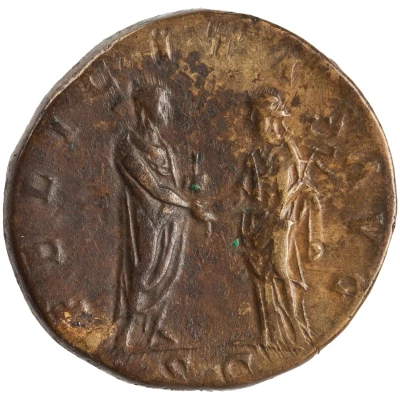


© Roma Numismatics Limited
Sestertius - Hadrian FELICITAS AVG S C; Felicitas
| Orichalcum | 25 g | 32.5 mm |
| Issuer | Rome › Roman Empire (27 BC - 395 AD) |
|---|---|
| Emperor | Hadrian (Publius Aelius Hadrianus) (117-138) |
| Type | Standard circulation coin |
| Years | 133-135 |
| Value | 1 Sestertius = ¼ Denarius |
| Currency | Denarius, Reform of Augustus (27 BC – AD 215) |
| Composition | Orichalcum |
| Weight | 25 g |
| Diameter | 32.5 mm |
| Shape | Round (irregular) |
| Technique | Hammered |
| Demonetized | Yes |
| Updated | 2024-10-06 |
| Numista | N#256559 |
|---|---|
| Rarity index | 100% |
Reverse
Hadrian standing right, holding scroll and greeting Felicitas, standing left, holding caduceus.
Script: Latin
Lettering:
FELICITAS AVG
S C
Translation:
Felicitas Augusti. Senatus Consultum.
The good fortune of the emperor (Augustus). Decree of the senate.
Comment
Source: Online Coins of the Roman Empire (OCRE)Interesting fact
One interesting fact about this coin is that the metal it's made of, orichalcum, is a curious blend of metals that was highly valued in ancient times. Orichalcum was a metal alloy that the Romans used for their coins, and it was made of a combination of copper, zinc, and sometimes even gold or silver. The exact composition of orichalcum is not known today, but it was prized for its durability and resistance to corrosion. The use of orichalcum in coins like the Sestertius - Hadrian (FELICITAS AVG S C; Felicitas) coin speaks to the advanced metallurgical knowledge and techniques of the ancient Romans.

